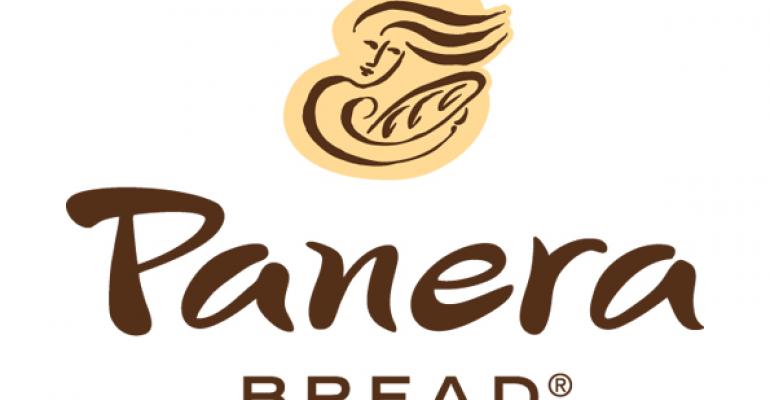Panera Bread Co. debuted Tuesday a new national advertising campaign to highlight the operator’s ongoing commitment to natural ingredients and “food as it should be.”
The campaign will include a series of television ads, digital and display content, billboards and radio spots that will begin to air this week. For the first time, the 1,901-unit fast-casual chain will place long-form versions of its ads in movie theaters this summer.
The ads, developed by agency Anomaly, focus less on food and more on people. The goal is to connect the brand’s emphasis on improved ingredients with real stories that capture the “humanity” and positive emotions around food, Panera chief marketing officer Chris Hollander said.
“The message is, we no longer have to compromise on health,” Hollander said. “All that’s left is the joy of good eating.”
Although the emphasis on quality ingredients and menu transparency is not new for the St. Louis-based bakery-café chain, the effort borrows a page from fast-casual competitor Chipotle Mexican Grill Inc., which has long positioned itself as a food activist battling the Big Food system that has led the limited-service segment down a path laden with artificial and genetically modified ingredients.
Like Chipotle, Panera’s campaign includes a call to action urging consumers to demand better from restaurants.
On Sunday, Panera placed full-page ads in newspapers across the country featuring a letter from Panera founder, chairman and CEO Ron Shaich, who invited consumers to “be part of the solution” and join the brand on its journey.
“We all have a job to do,” he wrote. “Yours is simple: Care. Ask questions. Demand transparency and cleaner menus.”
On the company’s website, Shaich offered a deeper explanation as to how Panera plans to be part of improving the food system.
Nearly a decade ago, Panera became one of the first restaurants to use chicken raised without antibiotics. Five years ago, the chain was one of the first to voluntarily post calorie counts on menu boards. Artificial trans fats, the Food and Drug Administration banned this week, have long been removed from the menu.
Last year, Panera pledged to remove artificial colors, flavors, sweeteners and preservatives from its menu by the end of 2016, as well as require that suppliers meet certain animal welfare standards. In May, the company issued a “No No List” of ingredients that it had or would strip from its recipes.
Because the chain is close to reaching that goal, the brand was ready to talk about it, Hollander said. But the campaign this week is the first phase in a continuing story.
“For us, it’s really about timing and making sure we can deliver on what we’re promising,” he said. “This sets up a foundation on which we can build.”
Hollander said he was encouraged to see competitors in recent weeks make similar pledges to use ingredients without certain additives, although, he said, on a lesser scale.
“If we all do it together, wow, that could be really powerful,” he said.
This first phase of Panera’s media push is expected to cost about $25 million, as part of an overall marketing spend of about $90 million this year, Hollander said.
The effort will include nontraditional advertising, including the increased use of social media.
Impact on pricing
On Tuesday, Panera opened a pantry in New York’s Soho neighborhood, to invite certain influencers to talk about the chain’s more than 450 ingredients with the culinary team.
On Wednesday, the pantry will open to the public as well. A sampling of “clean” summer salads — relaunched this year with dressings free of artificial ingredients — and sprouted grain rolls will be offered.
Panera said it has pledged to support Barnraiser, a community and crowd-funding platform with a mission of building sustainable food and farming.
Hollander said Panera’s move toward cleaner food is not expected to increase menu prices.
Though the impact on pricing was a concern at first, he said, not all changes have resulted in higher food costs. Still, “We don’t plan as of now in passing those costs along. We plan to manage those costs internally,” Hollander said.
The brand is also working to help consumers find menu items that meet their dietary needs. A new function is being developed for the website and app that will curate Panera dishes for certain eating styles, said Dan Kish, Panera senior vice president of food.
A series of buttons will be added to help customers find dishes that are high in protein, for example, or low in calories or sodium, vegan or vegetarian, or gluten free. Users can click on the button to find dishes that fit their needs, or dishes that can be easily customized to fit.
“We have great possibilities embedded in our menu,” Kish said. “But it’s a lot of work to walk in and just sort of see it and then deconstruct and reconstruct. We’ve got registered dieticians and nutritionists within Panera who collaborate with the culinary team to create things that not only taste good and sound good, but actually have a nutritional story to back it up.”
Contact Lisa Jennings at [email protected].
Follow her on Twitter: @livetodineout





